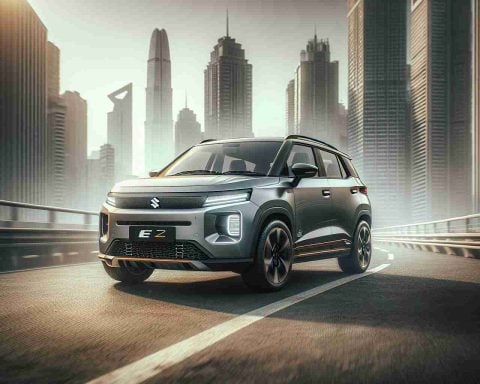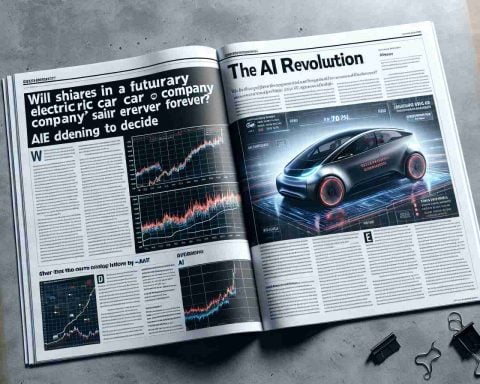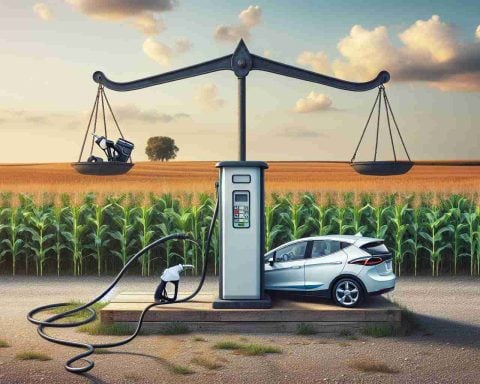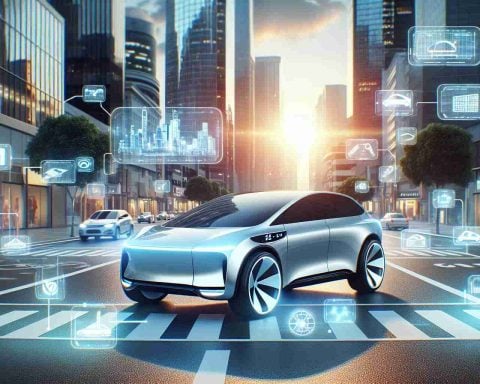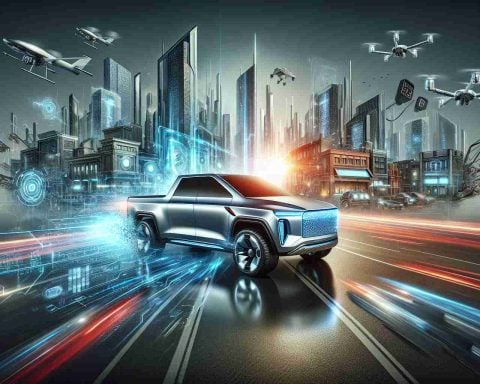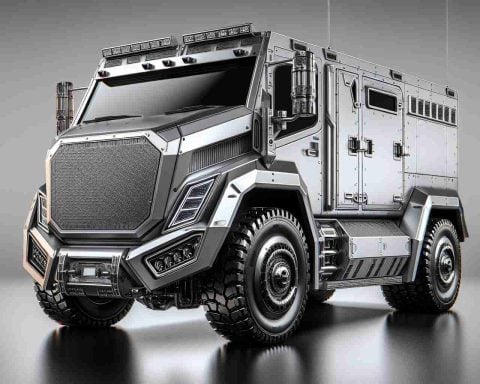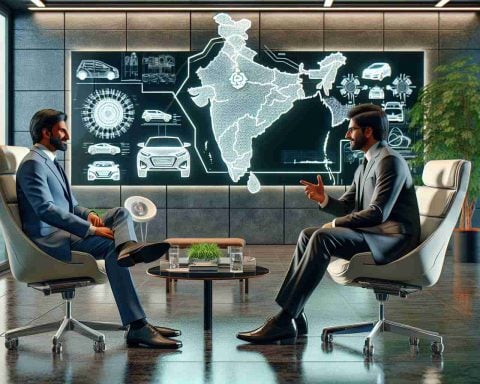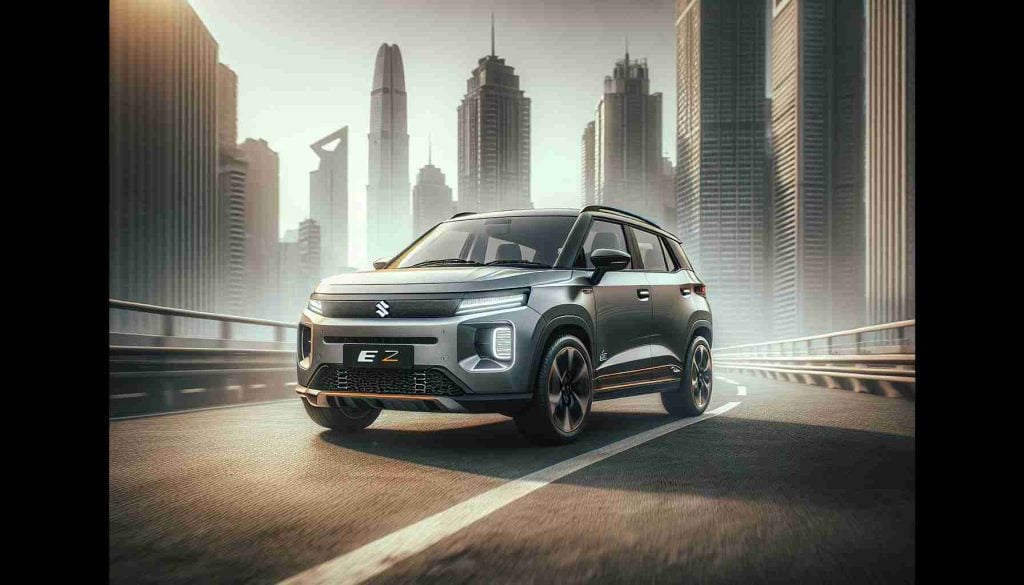- Aurrigo International unveils an innovative rainfall algorithm for autonomous vehicles, designed to perform in torrential rain conditions at airports.
- The algorithm can distinguish between raindrops and actual objects, maintaining functionality even with 50mm of precipitation per hour.
- Enhanced LiDAR sensor housing protects against severe weather, ensuring consistent performance and reliability.
- The Auto-DollyTug utilizes new spatial filtering technology to operate unaffected by rain, akin to navigating through stormy seas.
- Rigorous testing emphasized safety and performance, proving autonomous technology’s capability in extreme conditions.
- Aurrigo redefines autonomous navigation limits, showcasing that technological progress continues even amidst challenging weather scenarios.
In an arena where the elements can turn the skies gray with the flick of a switch, Aurrigo International emerges as the harbinger of innovation, unleashing an algorithm that boldly tackles torrential rain. Envision autonomous vehicles deftly maneuvering through airport thoroughfares not despite, but in harmony with, sheets of relentless downpour. This is not the prologue to a science fiction novel; it is the dawning reality at airports worldwide.
Aurrigo’s new rainfall algorithm stands as a sentinel against weather-induced chaos. Capable of distinguishing between the deceptive dance of raindrops and the presence of tangible objects, this innovation promises precision even under skies unleashing 50mm of precipitation per hour. Beyond mere software advancements, these engineering triumphs come encased in smartly redesigned housing that keeps the LiDAR sensors snug and dry, unfazed by the meteorological mayhem outside.
Imagine the Auto-DollyTug, reimagined and robust, carrying out its duties where humans falter, ensuring that the rhythm of airport operations remains unbroken. With its new spatial filtering technology, it sees through the mist like a seasoned mariner charting a safe course through stormy seas, unraveling a tapestry of data into discernible reality. This degree of clarity required testing that would challenge any mechanical mind, proving unwavering dedication to safety and performance.
Aurrigo has shattered a barrier, dispelling doubts about the limitations of autonomous navigation in extreme weather. The key message echoes with clarity: In a landscape battered by nature, the march of progress remains unimpeded. Aurrigo’s algorithm doesn’t just weather the storm; it embraces it, redefining the very fabric of what autonomous technology can achieve.
How Aurrigo’s Rainfall Algorithm Transforms Autonomous Vehicle Navigation in Bad Weather
Key Features and Innovations
Aurrigo International has developed a groundbreaking algorithm designed to empower autonomous vehicles to navigate efficiently in torrential rain. This innovation is specifically tailored to address the limitations of traditional sensor systems, particularly LiDAR, which can struggle in adverse weather conditions.
– Rainfall Tolerance: The system is capable of operating effectively even when faced with 50mm of rainfall per hour. This significant threshold ensures functionality in heavy rain that typically disrupts conventional systems.
– LiDAR and Sensor Protection: The redesigned housing for LiDAR sensors ensures their performance remains unaffected. These protective measures safeguard against physical deterioration and maintain the accuracy of sensor data under continuous deluges.
– Spatial Filtering Technology: The introduction of advanced spatial filtering allows the system to differentiate between raindrops and solid objects, enhancing navigation precision by accurately interpreting environmental data.
Real-World Use Cases
– Airport Operations: Autonomous vehicles equipped with this algorithm can ensure uninterrupted operations at airports. Tasks such as towing aircraft and transporting baggage can continue safely, even during severe weather, preventing delays and reducing downtime.
– Urban Mobility: Adaptability to inclement weather extends to autonomous taxis and delivery robots in urban environments, enhancing reliability across a range of weather conditions.
Reviews & Comparisons
Compared to other autonomous vehicle systems, the Aurrigo algorithm stands out for its specialized focus on weather resilience. While competitors like Waymo and Tesla have made strides in autonomous navigation, Aurrigo’s system fills a niche in environments where weather is a critical factor, offering solutions tailored for airport logistics and beyond.
Limitations and Controversies
Despite its advancements, Aurrigo’s technology may have limitations in detecting transparent or reflective obstacles that pose distinct challenges beyond those caused by rain. Furthermore, the full implementation in urban environments could require additional adaptation of existing traffic infrastructure to support continuous, real-time communication during extreme weather events.
Market Forecasts & Industry Trends
The global autonomous vehicle market is projected to grow significantly, with a compound annual growth rate (CAGR) exceeding 25% over the next decade. As reported by Statista, the market value is expected to reach approximately $556 billion by 2026. Innovations like Aurrigo’s rainfall algorithm will contribute to the robustness and versatility of autonomous systems, allowing them to function seamlessly in various scenarios, thus further accelerating market adoption.
Actionable Recommendations
– Adopt Robust Testing: When considering implementing autonomous systems, emphasize testing under simulated weather conditions to ensure reliability under real-world scenarios.
– Infrastructure Consideration: Anticipate the need for infrastructure that supports autonomous functionality, particularly in weather-heavy regions.
– Stay Informed on Trends: Businesses investing in autonomous technologies should track industry innovations and regulations to remain competitive and compliant in a rapidly evolving environment.
For more information about Aurrigo’s innovations and industry insights on autonomous technology, visit Aurrigo.


